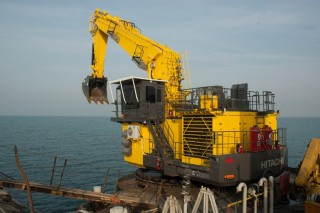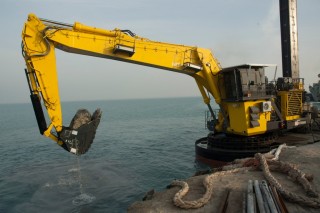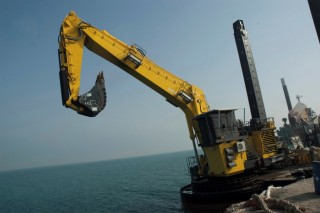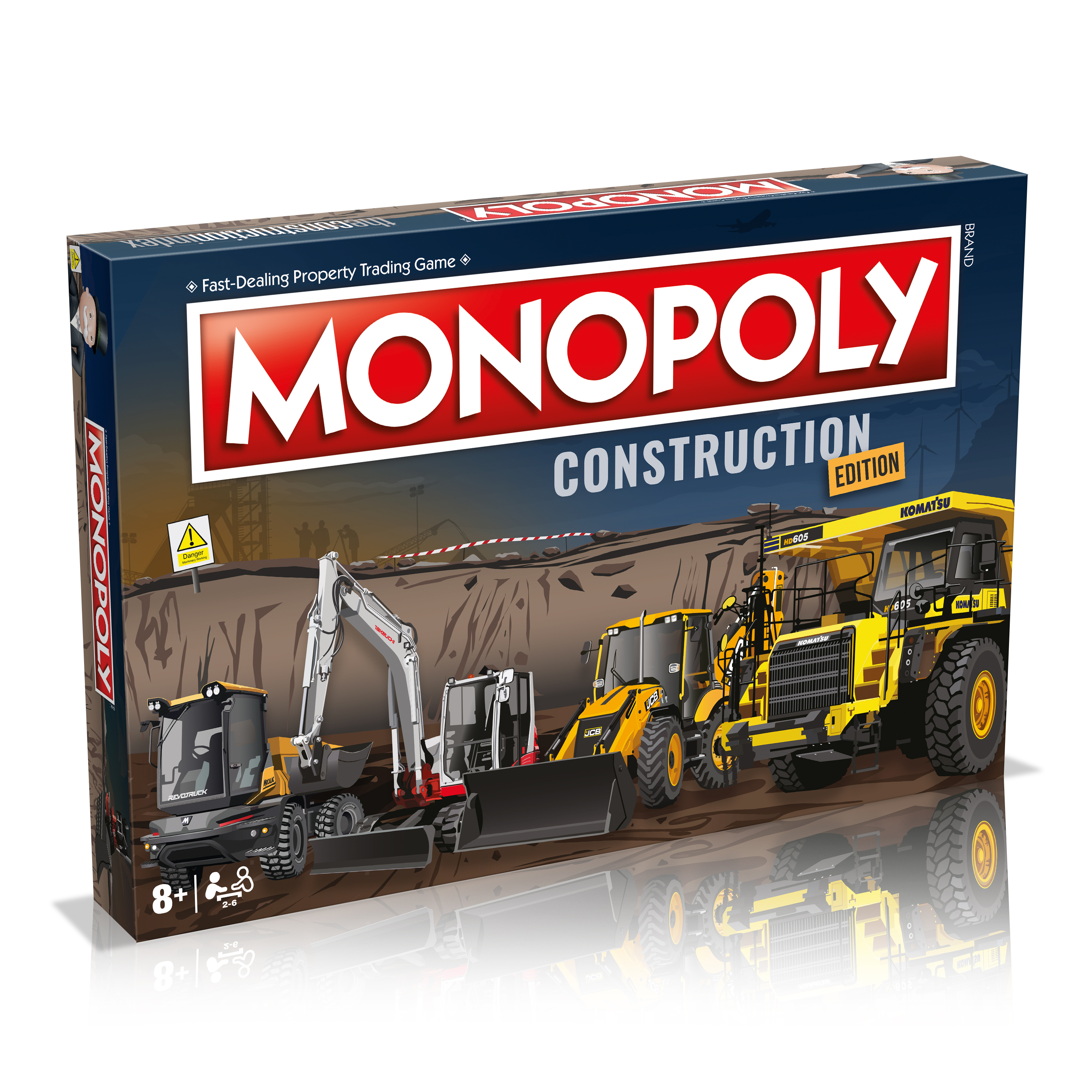The excavators are mounted on to pontoons, which are stabilised in the water with spud legs.
Hitachi says it was the first manufacturer in the Japanese market to produce an excavator for use on a pontoon. It has supplied approximately 240 excavators for this sort of application, mainly in Japan, working on port construction or maintenance projects. Some have been involved in recovery operations following the 2011 tsunami.
Demand from for excavators used on pontoons is also increasing in other countries, it seems. We reported last week on Land & Water's modified 7-tonne Hitachi Zaxis 70LC dredging in the Fens. But there are jobs for the big excavators mounted on pontoons too. Hitachi has sold four EX1200s to a sector of the Chinese government, for example.
With the expansion of the Panama Canal, container ships are getting bigger and so all the ports are having to up their game and expand accordingly, if they want the new generation of ships to dock there.
Various Hitachi models can be found mounted on pontoons, with the most popular proving to be the EX1200-6, EX1900-6 and EX3600-6. The largest available is the EX8000-6 backhoe, which is a new model launched in 2013, giving customers with an 800-tonne option.
The large excavators share many similarities with the standard mining models. Manufactured at the Development Centre of Mining and Heavy Equipment Division in the Rinko Works factory, they are designed to work in tough environments, 24 hours a day. They also have the same on-board computer (DUL) monitoring the performance of the engine and hydraulic system.
Some aspects of the design have been modified to allow for simpler maintenance while the machine is working at sea. These excavators have a new fast-fill system at the front, for example, allowing easier access to refill fuel and lubricants. On the standard mining excavator, this system is located under the counterweight to provide access at ground level.
The excavators can also be customised. For example, an EX1900-6 excavator was recently delivered to the Jan De Nul Group, with a custom-modified front attachment by Belgian dealer Luyckx. That's the machine pictured here, above and below.

This machine was required to work on dredging and marine construction projects in Dubai. The front attachment provided a maximum digging depth of 18m. It also had additional piping for a breaker attachment and was delivered with two arms, measuring 8m and 5.5m, which can both be used with the breaker.
Working in a marine environment has implications for the after-sales requirements of this machine, which differ to those of a mining excavator. The EX1900-6 is equipped with an anti-seawater specification, but working in the ocean can cause corrosion, which does not usually occur in a mine. Cylinders require extra care, additional painting is required, and lubricants must be refilled at least every four to five hours to prevent the wearing of pins and bushes. This is because more dirt and sand enter into the bucket pin due to the water pressure.
Working underwater also makes it difficult to see the material being dredged or excavated, which tends to place more stress on the excavator than if it was operating above sea level. On the swing circle, extra care is required to prevent the bolts from loosening, and daily inspections are vital.
One of the most challenging aspects of supplying this particular excavator, Hitachi reports, was the fact that the pontoon had been built for use with a competitor’s machine. In order to make the EX1900-6 fit on to the pontoon and for sufficient swing clearance between spud holes, the Hitachi engineering department had to adjust the front attachment several times.
Hitachi says that with the growing demand for excavators used in dredging operations, it is now looking at future developments for these machines. One of the main challenges will be to introduce an electric model with a low-range voltage, because of high oil prices and strict emission regulations, it says.




